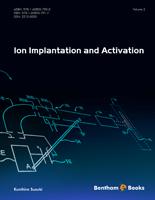Introduction
Progress in Computational Physics is a new e-book series devoted to recent research trends in computational physics. It contains chapters contributed by outstanding experts of modeling of physical problems. The series focuses on interdisciplinary computational perspectives of current physical challenges, new numerical techniques for the solution of mathematical wave equations and describes certain real-world applications.
With the help of powerful computers and sophisticated methods of numerical mathematics it is possible to simulate many ultramodern devices, e.g. photonic crystals structures, semiconductor nanostructures or fuel cell stacks devices, thus preventing expensive and longstanding design and optimization in the laboratories.
In this book series, research manuscripts are shortened as single chapters and focus on one hot topic per volume.
Engineers, physicists, meteorologists, etc. and applied mathematicians can benefit from the series content. Readers will get a deep and active insight into state-of-the art modeling and simulation techniques of ultra-modern devices and problems.
Periodic structure problems arise quite often in many modern application areas like semiconductor nanostructures (e.g. quantum dots and nanocrystals), semiconductor superlattices, photonic crystals structures, meta materials or Bragg gratings of surface plasmon polariton waveguides.
This first volume treats both mathematical analysis of periodic structure problems and state-of-the art numerical techniques, such as frequency domain methods, beam propagation methods and eigenmode expansion methods. Several chapters are devoted to concrete applications of periodic media simulation. The book is a useful resource for individuals interested in complex wave mechanics of unique physical structures.





